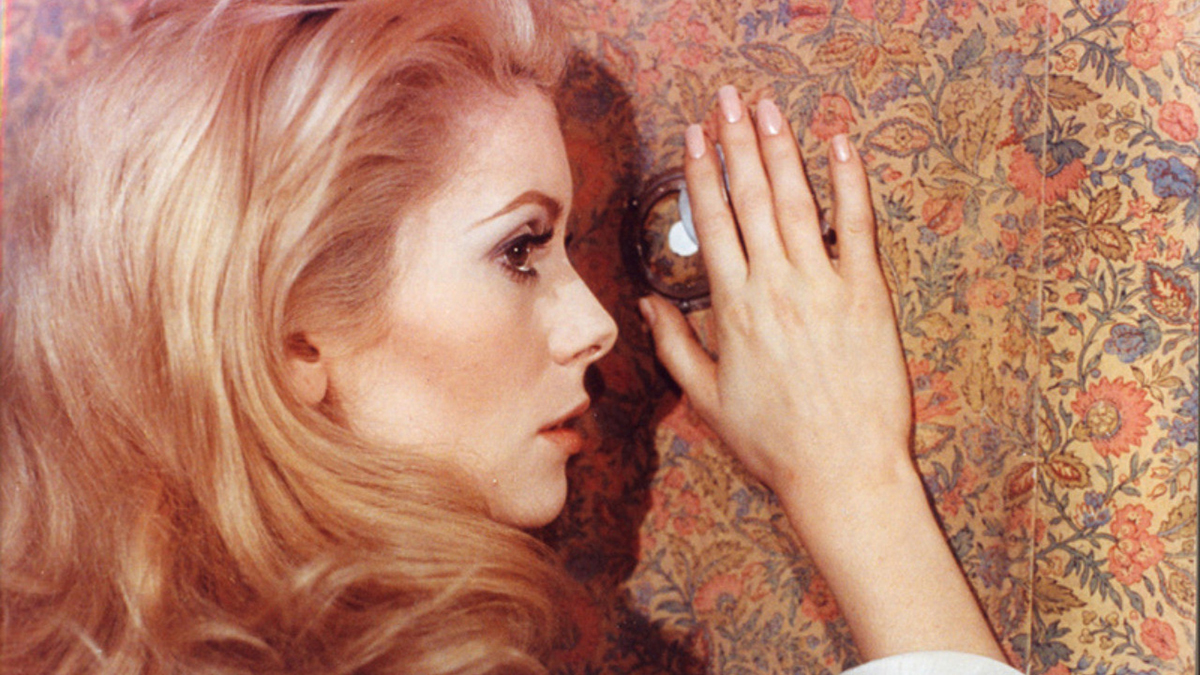Out of Focus: Egyptian Theatre to showcase Buñuel’s best films

Legendary filmmaker Luis Buñuel crafted films that blended surrealism with naturalistic elements in films such as 1967’s “Belle de Jour.” A selection of Buñuel’s films will be shown this week at the Egyptian Theatre. (Janus Films)
By Ian Colvin
May 28, 2014 12:01 a.m.
From the smoke-filled cafes of 1920s Paris, where his landmark film “Un Chien Andalou” was concocted with Salvador Dalí, to the poverty-stricken slums of 1950s Mexico, Luis Buñuel crafted a variety of masterpieces that would cement his status as one of the world’s greatest filmmakers.
Blending surrealism with elements of naturalism, and dealing in a variety of different genres, Buñuel made movies that were bizarre, disjointed, dream-like and beautiful.
This week at the Egyptian Theatre on Hollywood Boulevard, a selection of Buñuel’s best films will be screened. The following movies are my personal favorites of the short retrospective, but the other selections are all worthy of being seen as well.
“Belle de Jour” (1967)
Torn from the pages of a Gallimard paperback novel from 1928 by Joseph Kessel, “Belle de Jour” is Buñuel’s erotic masterpiece – a skillfully crafted movie about carnal desire in the streets and brothels of 1960s Paris.
The film opens with a scene straight out of “Story of O.” A carriage passes through the French countryside. The sexually indifferent Séverine (Catherine Deneuve) refuses her husband’s advances in the vehicle. She is taken behind some trees and whipped.
Then we cut to another scene with the young woman in bed. It becomes clear the sequence before was merely Séverine’s sexual fantasy. Séverine soon decides to become a prostitute to live out her other hushed desires, and takes on the name Belle de Jour (essentially, “lady of the day”) because she works only in the afternoon before her unknowing surgeon husband gets home.
Long before Lars von Trier’s “Nymphomaniac” or Michael Haneke’s “The Piano Teacher,” Buñuel’s film follows a woman whose life is consumed by thoughts largely deemed unacceptable by her community. In this respect, she is like almost no other female character represented in cinema at the time. Her desire to break away from society’s expectations of what a woman should be or what she should think and her pursuit of her own sexual destiny are both atypical and decades ahead of their time.
“The Discreet Charm of the Bourgeoisie” (1972)
Maybe Buñuel’s best film, “The Discreet Charm of the Bourgeoisie” is also one of his most narratively strange. It concerns a group of well-off people who are constantly trying to sit down for dinner, only to have it interrupted for a variety of reasons.
The whole movie defies logic, sitting outside the realm of rational thinking. It is composed of a series of repetitive scenes that are entirely nonsensical. Strange things happen and characters don’t bat an eye. Curtains open at one point revealing the characters are being watched by a theater audience as they try to eat; gangsters interrupt one dinner attempt with machine guns.
Buñuel detested and satirized the bourgeoisie throughout his work, but never is this more evident than in this film. He captures a ruling class in decay, consumed by its own hedonism and superficiality.
“The Discreet Charm of the Bourgeoisie” won the 1973 Academy Award for best foreign language film, making it one of the oddest yet most deserved winners in the award show’s history. It is a bizarre, funny, surreal masterpiece from a man who, at that point in his life, was almost completely deaf and yet continued to make films.
What classic films would you like to see receive their time in the limelight?


